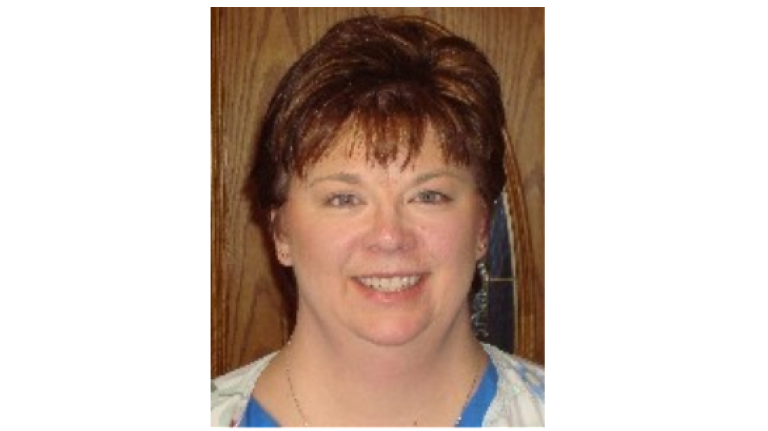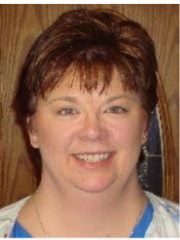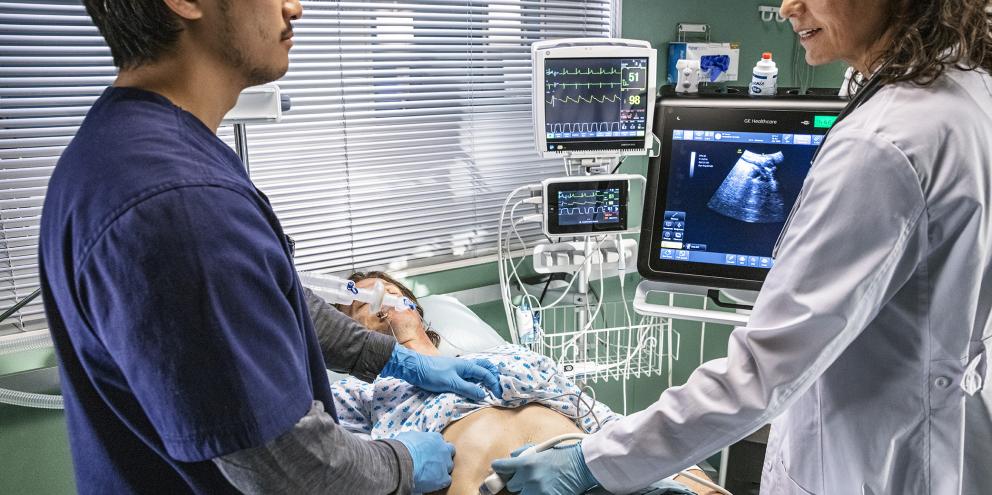
Q: Why is alarm fatigue important?
Faye Aebly: In the healthcare environment, nurses are continuously bombarded with noises from different alerts and alarms every moment of every day. Depending on the hospital unit, the number of alarms per patient per day can be in the hundreds. These alarms are intended to keep patients safe and nurses vigilant. Nurses must respond to actionable alarms; however, research indicates that 72 to 99 percent of alarms turn out to be false.1 We are good at filtering things out and prioritizing alarms that keep patients safe, but it all comes back to what happens to each nurse and her patients in terms of the alarms they are hearing.
The constant overload of noise generated in care environments can lead to alarm fatigue, where nurses may not hear the priority of an alarm and response time may vary. Nurses filter their responses based on what they think they hear or see. Alarm fatigue is overwhelming for nurses, and it has implications for patient care and outcomes. Patients need a quiet restful environment for recuperation, not one filled with constant noise. In addition, alarms are a source of worry and concern for patients and family, who may think an emergency is happening or feel that their loved one is not receiving quality care. The reality is that the nurse is no doubt aware of the alarm, but it is possible it’s false or might be a low-priority, non-actionable alarm.
Q: What are the standards pertaining to alarm management?
Aebly: In 2013, the Joint Commission issued a Sentinel Event Alert on alarm safety to all the hospitals they accredit.2 The alert was at first a call to action, stating that hospitals needed to make sure patients are safe and nurses are responsive to alarms. Later, the alert became something that hospitals could be reviewed on.
That publication drove hospitals to form committees to look at their overall alarm burden and determine steps to reduce it. This was the impetus for hospitals to ensure they had a view of actionable versus non-actionable alarms, an understanding of how default settings were determined, and a plan to train staff on how to effectively use these medical devices. The alert provided details for hospitals to establish a cross-functional approach to assessing, monitoring, and responding to alarms (actionable and non-actionable) within different care environments. Recommendations included working with the monitor companies to determine the default configuration of their monitoring systems, as well as training staff to tailor alarm settings and limits for individual patients. The alert specified the need for hospitals to show that the changes were effective and sustainable.
The American Association of Critical-Care Nurses also has responded to the issue. In 2018, it released a practice alert that outlines evidence-based protocols and strategies that facilities can use in addressing alarm fatigue.3
Q: How can we tackle alarm fatigue, clinically speaking?
Aebly: We do have the power to change the situation. Working the night shift at Advocate Aurora St. Luke’s Medical Center in 2014, I heard so many alarms being generated by the monitoring system. I brought my concern to my manager and suggested there were ways to identify the most frequently occurring alarms and then determine a plan to address them. That discussion spun into a work group; it turned out, people were very interested in this issue, because it affected them on a day-to-day or even minute-to-minute basis.
For our project, “Combating Alarm Fatigue in the Cardiovascular Intensive Care Unit,”4 (or "CVICU") we used the GE Healthcare Alarm Reporting Tool to look at the data and create a response that positively affected our staff and patient care. We pulled the logs from patient monitors and put the data into tables and graphs so we could see which alarms were happening and in what quantities. We analyzed and grouped the alarms that were occurring, on a monthly basis. During a 30-day period, in a unit with 30 monitored beds, there were over 300,000 alarms. It was a lot of alarms, and those were just from the patient monitors. Ventilators, dialysis machines, and IV pumps also make noise – you can see how fast the alarm burden grows.
The CVICU nursing council then discussed the data and strategies for improvement. Nurses need to know which alarms are actionable and not actionable, because the priorities and clinical responses are different for each one, even though they are all making noise. We changed some of our monitor configurations to better align with the actionable alarms, which reduced our alarm burden by 78 percent – a huge change.
Reducing alarm fatigue requires a multi-faceted methodical approach and a dedicated team fostering the right culture. It takes an ongoing effort to maintain the improvements. Reeducating staff on how to individualize monitor alarms on a per-patient basis was a big step in our success. The basic premise is, when a patient comes in, you start with the base monitor configuration and then adjust alarms and limits based on that patient. It is important to remember that each patient responds to the same treatments differently, and part of managing a patient is ensuring alarms and settings are individualized to that patient. By doing this, you impact the overall day-to-day alarm burden. In addition, we launched an educational campaign on the proper application of electrodes, in order to reduce nuisance alarms related to poor signal quality. The combination of these measures is ultimately what led to our success.
We presented our data and successes within the Advocate Aurora Healthcare organization in several ways, including at the 2018 Nursing Grand Rounds. In addition, our project was recognized as a recipient of the 2017 Aurora Healthcare Service Quality Awards. The data also were accepted as a poster presentation for the American Nurses Credentialing Center Magnet Conference in 2018.3
Q: How do the GE Alarm Reporting tool and CARESCAPE monitors help in addressing alarm fatigue?
Aebly: Since the Alarm Reporting Tool became available, we have had many conversations with GE customers on establishing committees and protocols on how to conduct alarm management using the CARESCAPE monitors. It takes time, because you have to understand and gather the data, and then you need a cross-functional team to discuss what to do with that information. That team should include nursing, biomedical engineers, clinical engineers, physicians, and monitor technicians. It is important to have all types of patient caregivers weigh in on alarm-improvement decisions. Every customer and every care unit has unique needs. Once you have the information and an approach in place, teaching the clinicians how to adjust the monitor settings and alarms to fit into their clinical workflow is paramount for continued improvement and long-term success.
At the time we conducted the project, we were using older GE monitors. We made the changes on those devices in anticipation of upgrading to the CARESCAPE B850 and B450 monitors. This was an opportunity to test the new configurations and validate that they were effective, which set us up for a successful transition.
The CARESCAPE monitors have new functionality that allows for the configuration of multiple profiles for each care unit. These profiles allow the clinicians to quickly change monitor settings and alarms based on changes in patient acuity or patient type to ensure that safe and effective alarms are set. One of the most important features of the CARESCAPE monitoring system is the availability of algorithms that ensure accurate and reliable signal and parameter measurements. Algorithms such as the EK-Pro Arrhythmia Detection and the SuperSTAT Non-Invasive Blood Pressure measurements are essential because they process data and produce measurements and alarms that clinicians trust when making critical and time-sensitive patient care decisions. Our trust in these measurements provides confidence that we are getting meaningful, actionable alarms to act on.
We now run the GE Alarm Reporting Tool on a monthly basis to assess if there have been any changes. If there was an increase in alarms, we look to see where and why that is happening. Monitoring the effectiveness of alarm management must be ongoing.
~ ~ ~ ~ ~
The effort of alarm management is well worth it. I remember the day I walked into the unit after we had made the changes. A nurse came up to me and said, “Listen!” I asked, “What am I listening to?” She replied, “Exactly!” The difference was so noticeable. The response from the staff was overwhelmingly positive, and they were responding quicker to the alarms that did happen. It was really a win for staff and patients.
References
- Sendelbach S, Funk M. Alarm fatigue: a patient safety concern. AACN Adv Crit Care. 2013;24(4):378–386. Accessed October 22, 2019.
- The Joint Commission. Sentinel Event Alert: Medical device alarm safety in hospitals. https://www.jointcommission.org/sea_issue_50/. Published April 2013. Accessed October 22, 2019.
- American Association of Critical-Care Nurses. Managing alarms in acute care across the life span: electrocardiography and pulse oximetry. Crit Care Nurse. 2018;38(2):e16– Accessed October 22, 2019.
- Loberg R, Aebly F, Brogley A, et al. Combating Alarm Fatigue in the Cardiovascular Intensive Care Unit. Aurora St. Luke’s Medical Center; 2018. Accessed October 22, 2019.

Faye Aebly
Faye Aebly is Clinical Development Manager for GE HealthCare and practicing nurse clinician at Advocate Aurora St. Luke’s Medical Center in Milwaukee








